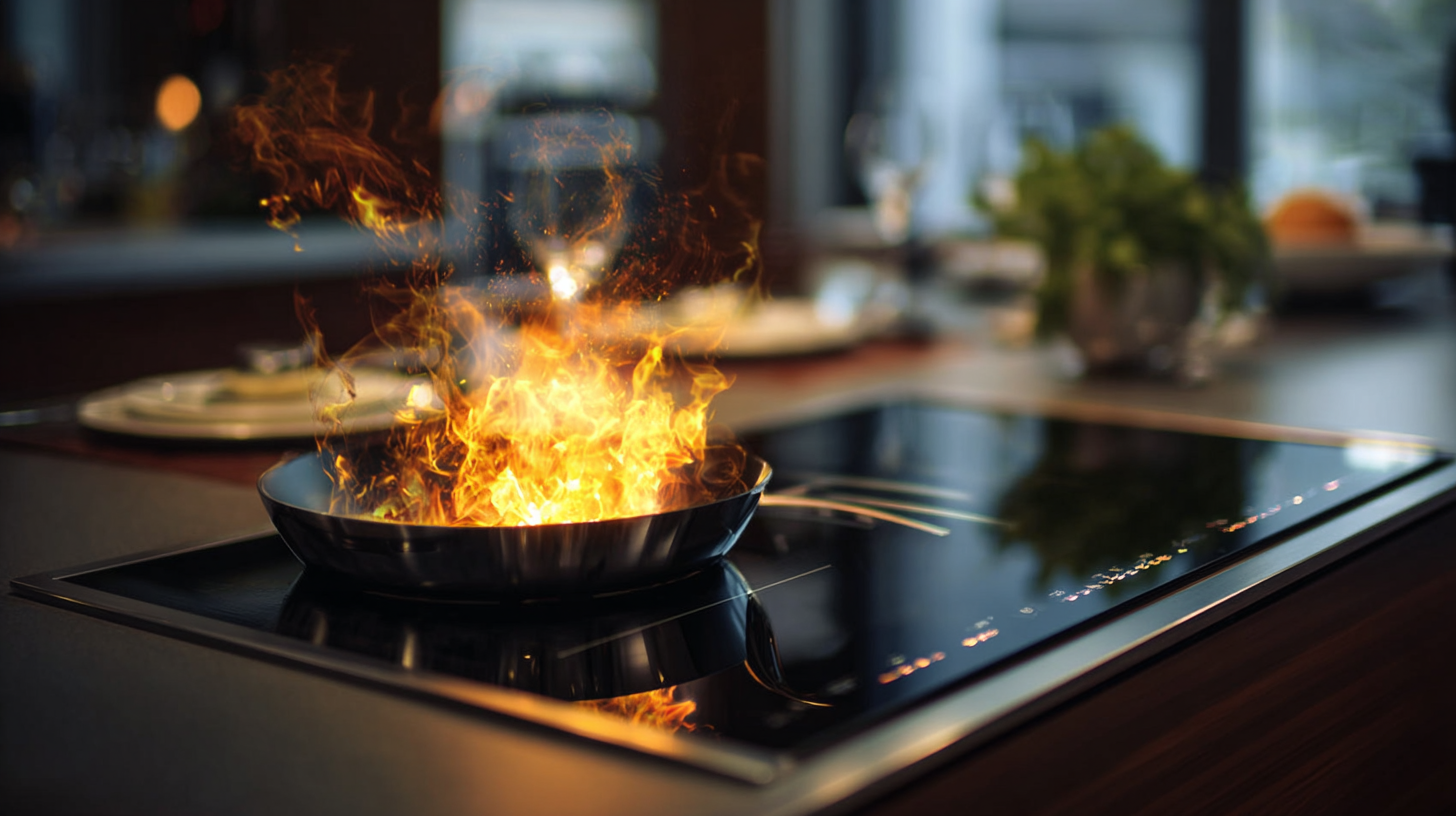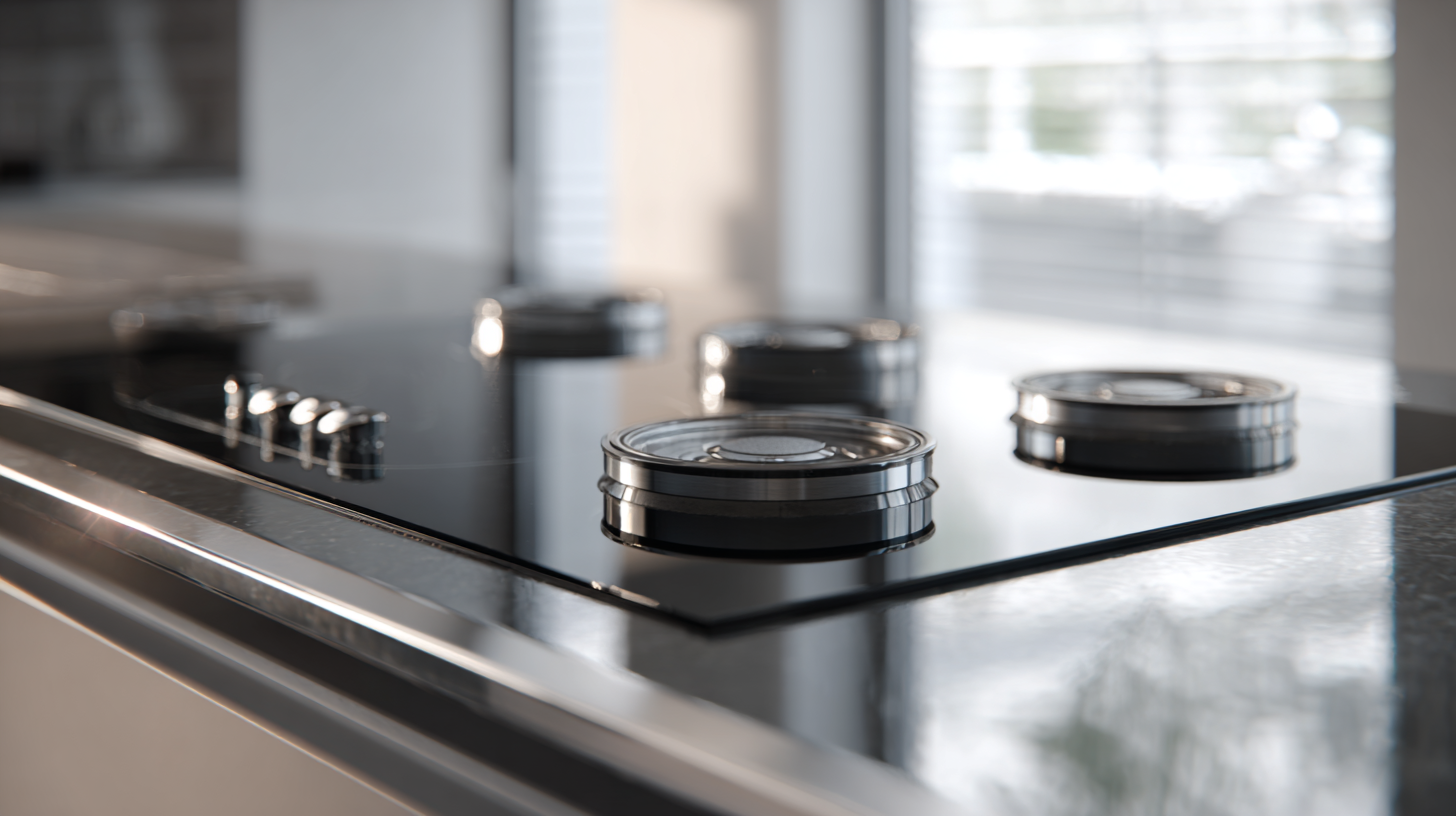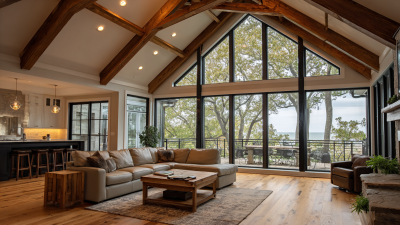
In the modern kitchen, the choice of materials plays a pivotal role in both aesthetics and functionality, with Hob Glass emerging as a favored option among homeowners and designers alike. According to a recent market analysis by Grand View Research, the global glass cookware market is projected to exceed USD 5.5 billion by 2026, driven by an increasing demand for visually appealing and heat-resistant materials in cooking environments. Given its sleek appearance and versatility, Hob Glass not only complements contemporary kitchen designs but also offers excellent thermal properties, making it a practical choice for everyday cooking.
Furthermore, with the growing emphasis on sustainability and eco-friendly materials, Hob Glass stands out as a viable option, being recyclable and often made from non-toxic materials. The recent survey from Statista indicates that about 70% of consumers consider sustainability an essential factor when choosing kitchen appliances and materials. As kitchen spaces evolve into multifunctional areas, selecting the right Hob Glass becomes crucial to creating an efficient and stylish culinary environment. By adhering to essential tips, homeowners can make informed decisions that enhance both the visual appeal and functionality of their kitchens.

When it comes to selecting the right hob glass for your kitchen, understanding the different types available is key to enhancing your cooking experience. Induction hobs, known for their energy efficiency and rapid heating capabilities, are perfect for those who value speed and precision. If you often cook large meals or prefer a traditional approach, gas hobs may be more suitable, offering immediate heat control. Lastly, ceramic hobs provide a sleek design and are easy to clean, catering to aesthetic preferences and functionality.
When choosing hob glass, consider factors such as heat resistance, ease of maintenance, and compatibility with your cooking style. For instance, if you frequently use multi-cookers or pressure cookers, selecting hob materials that withstand high temperatures without compromising performance is crucial. Additionally, if you enjoy portable cooking, look for lightweight hob glass options that are easy to transport. Always prioritize the durability and safety of the glass to ensure your cooking endeavors are both enjoyable and safe.
When selecting the perfect hob glass for your kitchen, it is crucial to consider size, shape, and compatibility with existing kitchen elements. The size of the hob glass should correspond to the dimensions of your cooktop and available counter space. A well-fitted hob glass not only enhances the aesthetic appeal but also ensures optimal cooking efficiency.
Measure your cooktop carefully and account for any surrounding appliances or furnishings that may impact installation.
The shape of the hob glass plays a significant role in functionality and design cohesion. Options include circular, rectangular, or custom shapes, each catering to different cooking styles and kitchen layouts. A rounded hob glass may complement a more traditional kitchen design, while a sleek, rectangular glass can enhance a contemporary look. Finally, compatibility is paramount—be sure to select a hob glass that aligns with your stovetop type, whether it's gas, electric, or induction. Ensuring that the glass meets the necessary safety standards and works well with your cooking equipment will enhance both your cooking experience and kitchen aesthetics.
When selecting a hob glass for your kitchen, durability should be a top consideration, particularly heat and scratch resistance. According to a report by the National Association of Kitchen and Bath (NAHB), nearly 60% of homeowners prioritize durability in their kitchen materials, particularly in areas exposed to high heat and potential abrasions. Quality hob glass must withstand the intense temperatures generated by cooking equipment, ensuring it doesn't crack or shatter under stress. Look for tempered glass options with a minimum thickness of 5mm, as this significantly enhances heat resistance.
In addition, scratch resistance is crucial for maintaining the aesthetic appeal and functionality of your hob glass. A scratch-free surface not only makes cleaning easier but also extends the life of the product. Research by the International Glass Association suggests that using coatings designed to resist scratches can reduce wear by up to 30%. Therefore, when choosing hob glass, consider products that feature specially treated surfaces that can endure everyday use without compromising their appearance.
Tips for Choosing the Perfect Hob Glass: Always check for certification labels that attest to the glass's heat resistance capabilities. Additionally, opt for finishes or coatings that promise scratch resistance, ensuring the glass retains its clarity and elegance over time. Finally, gather consumer reviews focusing on durability, as firsthand experiences can provide valuable insights into the long-term performance of the hob glass you consider.
| Tip Number | Tip Description | Key Benefits |
|---|---|---|
| 1 | Look for heat-resistant glass | Ensures safety and prevents cracking under high temperatures |
| 2 | Choose scratch-resistant options | Maintains appearance and prevents damage over time |
| 3 | Consider thickness | Thicker glass offers better durability and insulation |
| 4 | Look for tempered glass | Provides extra strength and safety if broken |
| 5 | Choose low maintenance glass | Easier to clean and maintain over time |
| 6 | Check for UV protection | Reduces fading of kitchen materials |
| 7 | Select a stylish design | Enhances the overall aesthetics of your kitchen |
| 8 | Ensure good insulation properties | Saves energy and keeps heat in |
| 9 | Look for customized sizes | Perfect fit for your specific kitchen layout |
| 10 | Read customer reviews | Gives insight into product performance and satisfaction |
When selecting the ideal hob glass for your kitchen, design aesthetics play a crucial role in creating a cohesive look. According to a survey by Houzz, 75% of homeowners prioritize the visual appeal of kitchen appliances when undergoing renovations. This significant statistic highlights the importance of aligning your hob glass with the overall décor of your kitchen.

When considering colors and textures, one must take into account the existing cabinetry and countertops. For instance, if your kitchen features a sleek contemporary design with granite countertops, a minimalist black or clear hob glass can enhance that modern feel, seamlessly blending with the environment. Furthermore, data from the Kitchen and Bath Association suggests that darker tones are increasingly favored in modern kitchens for their ability to command attention while remaining elegant and functional.
In addition to color, the shape and style of the hob glass should resonate with the kitchen's design elements. Choosing rounded edges for a softer look can complement a rustic kitchen, while sharp, geometric lines are more suited to a modern aesthetic. Ultimately, thoughtful consideration of these design aspects will ensure that your hob glass not only meets practical cooking needs but also elevates the style of your kitchen, supporting the trend of personalized and functional spaces in contemporary home design.
When selecting hob glass for your kitchen, ease of maintenance should be a top priority. Look for hob glass that is resistant to stains and scratches, which can significantly reduce the effort required for upkeep. Choosing durable materials can help prevent common issues that arise with extensive use, allowing you to spend less time cleaning and more time enjoying your cooking. For easy care, consider glass surfaces that are specifically designed to withstand high temperatures while being easy to wipe clean.

To maintain the pristine condition of your hob glass, it's essential to develop good habits. Regularly clean the surface with simple, everyday household items like vinegar or lemon juice to keep it free from grease and grime. Additionally, understanding which cleaning methods are effective can prevent damage; for instance, using abrasive tools can scratch your glass. By incorporating these strategies, you can ensure that your kitchen remains stylish and functional with minimal effort.





